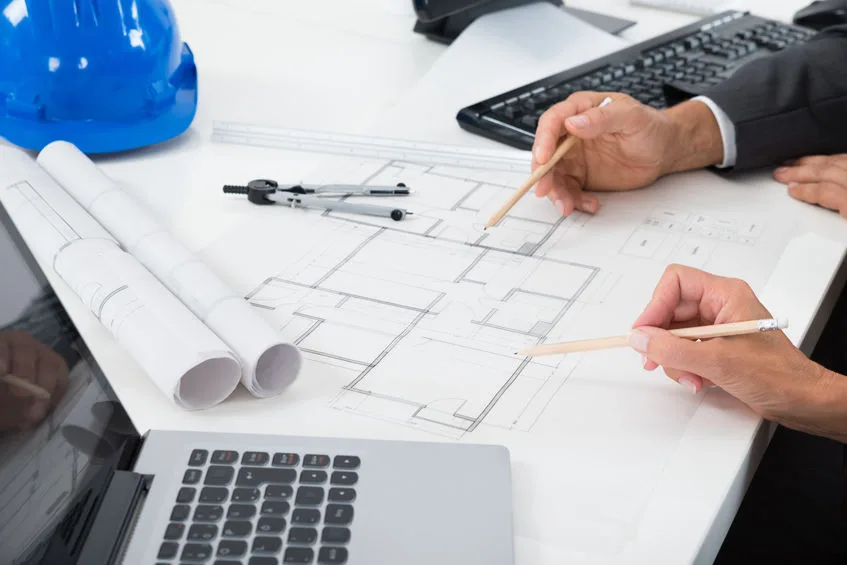Architect Rules for Designing Timeless Interiors
Architect Rules for Designing Timeless Interiors
Blog Article
Comprehending the Diverse Career Paths Available for Aspiring Architect
As a hopeful Architect, you have a world of career courses waiting for you. Each course provides one-of-a-kind challenges and possibilities to apply your creative thinking and technical expertise. Whether you're drawn to traditional style or the nuances of lasting design, there's a specific niche that aligns with your rate of interests. Recognizing these diverse choices can form your professional journey, however which instructions will you choose to discover first?
Conventional Architecture: Designing Structures and Frameworks
Typical style concentrates on designing buildings and frameworks that blend capability with visual appeal. Your designs can show cultural heritage, showcasing local traditions while meeting modern-day needs.
You'll develop abilities in composing, model-making, and website evaluation, permitting you to envision and interact your ideas successfully. Involving with clients, you'll require to recognize their vision and equate it into feasible layouts.
In addition, constructing codes and sustainability techniques are essential in your job, guaranteeing your structures are eco pleasant and safe. As you expand in your job, you'll locate chances in domestic, commercial, or perhaps restoration projects, each offering one-of-a-kind difficulties. Embracing typical design paves the means for a satisfying profession that pays tribute to the past while shaping the future.
Urban Preparation: Forming Communities and Public Spaces
As an ambitious Architect, you can play a necessary function as a city coordinator, changing just how communities connect and work. By using area engagement approaches, you'll guarantee that homeowners have a voice fit their environment. Plus, incorporating sustainable style concepts will certainly assist create areas that not only satisfy today's needs however additionally secure the future.
Function of Urban Planners
While many could assume of architects as the sole dreamers behind buildings, metropolitan planners play a necessary duty in forming the broader landscape of communities and public spaces. By collaborating with numerous stakeholders, you'll aid develop parks, transportation systems, and domestic areas that advertise social communication and availability. Your knowledge in spatial layout and area dynamics allows you to envision future development while protecting cultural heritage.
Neighborhood Interaction Strategies
Reliable community involvement techniques are important for urban organizers to guarantee that the voices of locals are heard and valued in the preparation process. To promote meaningful discussion, you ought to prioritize open discussion forums and workshops where neighborhood participants can reveal their ideas and problems. Usage surveys and social media sites to get to a wider target market, making sure diverse viewpoints are included. Collaborating with local companies can enhance depend on and promote much deeper links. It is necessary to provide clear information regarding proposed jobs and decision-making procedures, allowing citizens to really feel educated and empowered. By proactively paying attention and incorporating responses, you'll produce rooms that reflect the neighborhood's requirements, ultimately causing even more lasting and successful metropolitan settings. Embrace transparency and constant dialogue for lasting effect.
Sustainable Style Concepts
When creating metropolitan spaces, including sustainable style principles is crucial for producing environments that grow both environmentally and socially. Consider incorporating eco-friendly spaces, like parks and gardens, to improve biodiversity and boost air top quality.
Creating with water conservation in mind is additionally crucial-- think regarding rain yards and permeable surface areas to handle stormwater. Entailing neighborhood participants throughout the planning procedure warranties that the areas you create satisfy their needs and motivate social communication. By embracing these concepts, you'll add to dynamic, sustainable city landscapes that benefit everyone.

Landscape Style: Creating Sustainable Outdoor Environments
As you explore landscape style, you'll find necessary layout principles that develop beautiful and useful exterior areas. Lasting methods play an important duty in making sure these environments grow while decreasing environmental impact. And also, you'll discover a selection of profession opportunities that allow you to make an actual difference in how people interact with nature.
Layout Concepts in Landscape
Comprehending design principles in landscape architecture is vital for creating lasting exterior atmospheres that balance with nature. You'll need to contemplate elements like balance, scale, and proportion to assure your designs feel natural and welcoming. In addition, pay focus to seasonal adjustments, making with products that match the environments year-round.
Sustainable Practices Overview
Sustainable methods in landscape architecture not only concentrate on appearances but additionally focus on ecological health and wellness and source conservation. You can design areas that advertise soil wellness, such as utilizing natural products and exercising permaculture principles. Inevitably, these techniques ensure your styles profit both people and the environment for years to come.
Profession Opportunities Exploration
With a strong structure in sustainable methods, landscape style offers a variety of profession paths that permit you to make a significant influence on the setting. You can function as a landscape developer, developing visually pleasing and practical outside rooms, or concentrate on ecological repair, aiding to restore damaged ecological communities. Urban coordinators usually work together with landscape designers to produce eco-friendly spaces in urban settings, enhancing city livability. If you're enthusiastic concerning education and learning, take into consideration coming to be a landscape design teacher, inspiring future generations. Additionally, you might deal with nonprofits concentrated on ecological sustainability or take part in research study to innovate brand-new techniques. Each course not only shapes gorgeous environments but also fosters a much healthier world for future generations.
Sustainable Layout: Concentrating On Eco-Friendly Practices
As you discover your occupation in architecture, welcoming environment-friendly techniques can establish you apart in a competitive field. Lasting layout concentrates on creating structures that minimize ecological influence while boosting resident health. By integrating eco-friendly materials, energy-efficient systems, and sustainable building techniques, you'll add to a greener future.
Start by getting expertise of eco-friendly accreditations like LEED or BREEAM, which can strengthen your credentials. Think look here about just how natural light, ventilation, and thermal performance can optimize style. Team up with designers and environmental experts to innovate services that minimize waste and preserve sources.
Don't forget the value of community involvement-- appealing neighborhood stakeholders can motivate layouts that harmonize with the atmosphere. As customers significantly focus on sustainability, your proficiency in environmentally friendly methods will certainly not just bring in tasks but likewise meet your interest for liable style. Welcome this essential element of the occupation, and enjoy your occupation prosper.
Historical Conservation: Protecting and Restoring Social Heritage
While you start on your building trip, take into consideration the important role of historic conservation in keeping our social heritage. This field concentrates on the security and remediation of considerable buildings, websites, and frameworks that inform the tales of our past. By taking part in historic preservation, you'll aid guard the building tradition that shapes community identification.
As a historic conservation Architect, you'll analyze historic importance and evaluate the condition of frameworks. You'll work closely with historians and guardians to ensure authentic remediation methods are utilized. This job path allows you to mix creativity with research study, allowing you to design services that value original materials and workmanship.
Your work not just adds to sustainability by recycling existing structures but additionally fosters a feeling of pride within neighborhoods. Embracing this course will aid you become a guardian of background, maintaining the stories and looks that enhance our lives.
Inside Architecture: Enhancing Indoor Spaces
Historic conservation and indoor design both share a dedication to improving the built atmosphere, however they concentrate on different facets. While historical conservation highlights maintaining a structure's historical and cultural value, interior architecture zeroes in on maximizing interior spaces for performance and aesthetics.
As an aspiring Architect, you'll discover that indoor style allows you to blend creative thinking with technical skills. You'll develop areas that not just look excellent but likewise advertise convenience and performance. This area entails recognizing just how light, color, and materials communicate within a space, influencing state of mind and use.
You'll function on numerous tasks, from residential homes to industrial offices, making sure that each atmosphere satisfies the requirements of its passengers. By focusing on user experience, you can change insides right into practical and inspiring areas, making a considerable effect on exactly how people communicate with their surroundings. Embrace the opportunity to boost interior atmospheres and shape the way people function and live.
Industrial Style: Merging Functionality With Appearances
Commercial style plays a necessary function in creating items that seamlessly mix appearances with performance, guaranteeing that what you use day-to-day is not just aesthetically appealing yet likewise useful. As an aspiring Architect, you can engage on your own in this field, concentrating on developing everything from furniture to consumer electronic devices. Your work entails comprehending user demands, products, and producing processes, enabling you to create cutting-edge services that boost daily experiences.
In industrial layout, you'll commonly collaborate with engineers, makers, and marketers, making sure that your layouts are not only beautiful yet also possible. You'll find out to balance form and feature, prioritizing functionality without sacrificing design. By sharpening your abilities in sketching, 3D modeling, and prototyping, you'll be well-equipped to bring your ideas to life. This occupation course offers a dynamic atmosphere where creative thinking meets functionality, making it a satisfying selection for architects interested in forming the items of tomorrow.
Regularly Asked Concerns
What Educational Credentials Do I Need to End Up Being a Designer?
To become an engineer, you'll require a professional level in style, typically a Bachelor's or Master's. In addition, you'll need to complete a have a peek here teaching fellowship and pass the Architect Registration Examination to exercise legally.
Exist Accreditation Requirements for Various Architectural Career Paths?
Yes, there're qualification demands for numerous architectural paths. Architect. You'll require to pass examinations, full teaching fellowships, and in some cases seek specialized training, relying on your chosen emphasis, like landscape architecture, city design, or historical conservation
What Software Program Skills Are Important for Engineers Today?

Just How Can I Gain Practical Experience While Examining Style?
You can get functional experience by interning at architectural companies, joining design competitors, volunteering for area projects, or working together with classmates on real-world jobs. These possibilities boost your skills and construct valuable links in the industry.
What Work Opportunities Exist Outside Typical Design Firms?
You can explore different job chances outside typical design companies, like metropolitan preparation, interior official statement decoration, landscape architecture, building and construction management, property advancement, and even functions in sustainability consulting. Each deals unique difficulties and incentives.
Whether you're drawn to traditional design or the subtleties of sustainable style, there's a niche that aligns with your rate of interests.When designing urban areas, integrating sustainable design principles is critical for creating environments that flourish both ecologically and socially.As you discover landscape design, you'll uncover important style concepts that develop practical and beautiful outdoor spaces.Comprehending style concepts in landscape style is crucial for creating sustainable outside atmospheres that balance with nature.In commercial style, you'll commonly work together with engineers, producers, and marketing professionals, guaranteeing that your designs are not only attractive but also viable.
Report this page